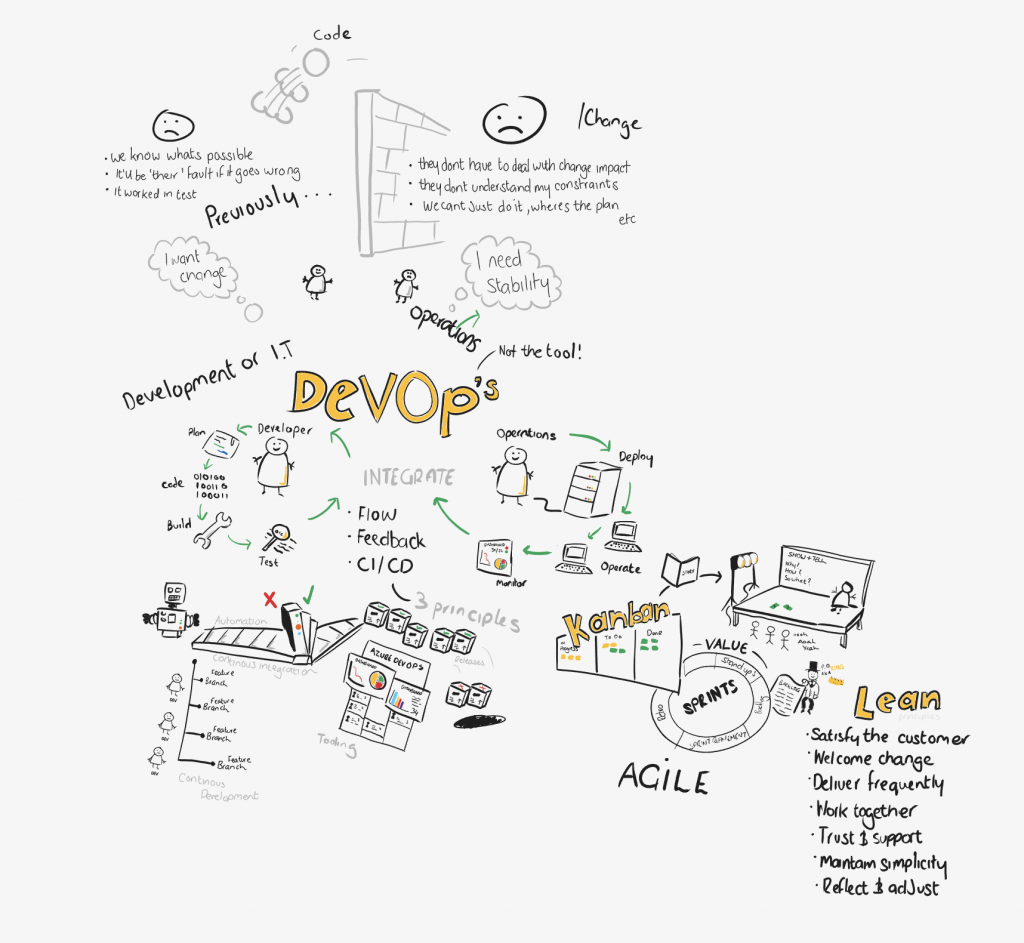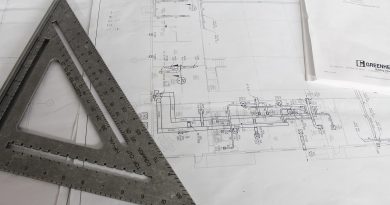Tech Trends of 2022
Companies far & wide have been tested & stretched over the last two years. More than arguably ever before. I work with a lot of organisations who are thinking about rebooting their transformation plans, starting a new transformation strategy or are assessing where they are with their existing journey.
2022 quickly brings with it several things which I think companies need to think about and I wanted to touch upon them briefly and in an order of priority *I* would tackle them if I were C-level at a large organisation. I also wanted to include a couple of things I think are absolute bollocks. Some is tech, some is more operational. But it’s what I see & it’s my opinion.
Plain and simple, this stuff isn’t as complicated as you may think. Do the right thing by your employee’s & customers, make ethical decisions first, rather than profit, take technology seriously and stop paying thousands for consultancy firms who just deliver PowerPoint slides.
Cyber-security & in support of hybrid working models
My own companies as well as my clients, are all handling hybrid working models to support an ever changing & demanding workforce. Inextricably linked to any hybrid working model is a capable, scalable & accessible IT infrastructure and security is at the forefront of that. As IT continues to be commoditised & a common shift to public cloud accelerates, the risk profile increases exponentially from cyber-attack, data abuse & much more. We’ve seen what happens when digital services go down and the impact that can have from inability to book driving tests, or book flights, or even book a COVID jab. So 2022 I think is where a security first (rather than lip-service) approach would be massively beneficial.
Public Cloud-first strategy
Many companies now understand a build versus buy analysis & are making smarter decisions to which one they choose & justifying the why. As the desire to commoditise (read: reduce costs) IT & associated services, taking everything into a containerised PAYG environment is often hugely beneficial. I’ve talked regularly about most companies have now done the removal of on-premises kit and got workload into ‘a cloud’. Now they are (or should be) starting to assess where their services & workloads are, and optimising them for not only the smallest cost footprint, but also for the most resilient approach to delivering services. Cloud aggregation, Cloud costs & sprawl are conversations outside the scope of this blog post but, are all important, nonetheless. I see many teams use product like Terraform and the ability to now in a turnkey fashion deploy IaaS (Infrastructure-as-a-service) easily & in a truly scalable way, will require a new breed of architect & IT director. They have to think not only about cost, but performance, & security (see above) too.
DevOps first

DevOps is still not only a thing, but a DevOps first culture, will in theory, start to help address in the right order the two points above. We’re now seeing companies take advice on bringing software engineers to the start of conversations around the design & build process, including engineers in the architectural decision making process & ensuring adequate thought & attention has been put into again, all the above points I’ve written about. I’m not saying DevOps is new, I’m saying companies now are starting to understand it and people are getting better at executing on what.it.is.
DevOps for me symbolises the entire SDLC done properly, but not only that, it massively dovetails into the practical & understandable elements of broader Agile execution & enterprise agility in general.
PAYG On/Off IaaS, SaaS & PaaS
A bit of a subset of the one above & leading to the one below, we should now start to see new IT Directors and IT experts who understand this technology implementing it. Microservices for the public-sector, cost-efficient containerisation of critical applications & all handled by a support layer, meaning software and platforms is now starting to become ‘just another service’. For many organisations that will be ideal because the cost savings means CAPEX can be spent in other worthy areas often forgotten about. Terraform & other scalable infrastructure tech continuing to be deployed rather than expensive physical hardware will offer so much more flexibility. Virtual should be considered in your next Architecture planning session.
AI, Autonomous process & workflow & RPA
In truth, I found many organisations didn’t really either understand RPA or execute on RPA well over the last few years. Although plenty of good RPA propositions exist (Blue Prism, UI Path, Automation anywhere etc) there was a lot of immature or still infant conversations happening at the time by in-org C level execs. Mostly around robots taking over peoples jobs and the subsequent fear meaning RPA projects were often mothballed because they were a pain in the arse. With a combination of viable solutions from an infrastructural perspective with products like Terraform and the need for heavy automation to deploy said architecture, getting a strategy across all of this is now paramount. Automation at the desktop is also a thing too, and companies need to think about what they should use their human workforce for, versus what can be left to machine. Again, commoditisation comes in here as day-to-day infrastructural support can often be achieved by less senior architects for example.
Company re-shuffles, the ‘great resignation’ & accommodating fluid hierarchy models
Lots of change in organisations, with workforces questioning their very existence since the pandemic. What work is, looks like, and how it supports & nourishes its workforce, plus the headache of how organisations deploy a hybrid working model to try & keep everyone happy, means lots of people are having life evaluations and throwing in the towel. What does this mean? Lots of structural re-orgs & companies need the processes and continuity through technology to help support rapid change. Clients ask me how they support change, information continuity, protection against libel activity, how to communicate culture and mission, provide hybrid working environments that suit all. Organisations really need to get a handle of what they are asking their staff to do, and what that looks like. Employee’s need to consider their next career jump and often at the centre of these decisions after pay, comes the technology people get to play with, BYOD ever at the forefront so a good set of IT policies, Hybrid working models & communication of those is going to be constantly needed.
The things I think are absolute bollocks at this time;
The ‘Meta-verse’
Now look, I’ve used platforms like Lintilla back in the early 90’s, (remember building your own MUD on NUTs?), or even there.com which I believe has made a bit of a resurgence. I was advertising my website on a signage board on some virtual estate before many even had an internet connection. And what with Minecraft, in-game and in-world opportunities for engagement, advertising, heck my daughter watched an Ariana Grande concert in Fortnite the other month, so look I get it. VR has made leaps & bounds in advancements & the hardware is almost affordable & ubiquitous. (think Hololens, Quest, etc) but, it’s clear there’s no way many are mature enough to even start having sensible conversations. No one even knows what the ‘Metaverse’ is yet. It’s not one thing, its many things & how do you even begin to think about the societal impact it will have. So, let’s not talk about it for now, and if you’re working for a management consultancy firm that’s talking about it like an expert, fire them. Yes, the space will probably be dominated by companies like Meta, (formally Facebook) and Microsoft, possibly a few others but if you can’t get your real-word affairs in order, I’d advise anyone to not think too deeply about this one. And if you are interested, and you’re C-level, why not put your hand in your pocket, go and get a Quest Dev kit, and play. This is your job now. Not the nerds you employed 10 years ago & who you look at as a cost centre!
NFTs
Like Blockchain, industry & market movers have simply picked a piece of technology that already existed & slapped on a quasi-understandable ‘need’, spun it in a new way via social and put a price on it. They are fckn JPGs for crying out loud. Mostly, shit ones. Don’t’ get it confused with the very valid digital watermarking, proof of ownership or uniqueness or security elements that the blockchain derivative NFT can provide, that’s all good. The benefits are huge. I’m talking about Gary fckn Vee calling up eight of his billionaire chums to artificially inflate something that doesn’t exist like Cryptopunks or the bullshit Vee Friends. If it was a stock, the SCC would be on them. And don’t for one minute think there isn’t going to be an utter bloodbath later down the line with all this money that’s been made on something which DOESN’T FCKN EXIST. Don’t say I didn’t warn you.




